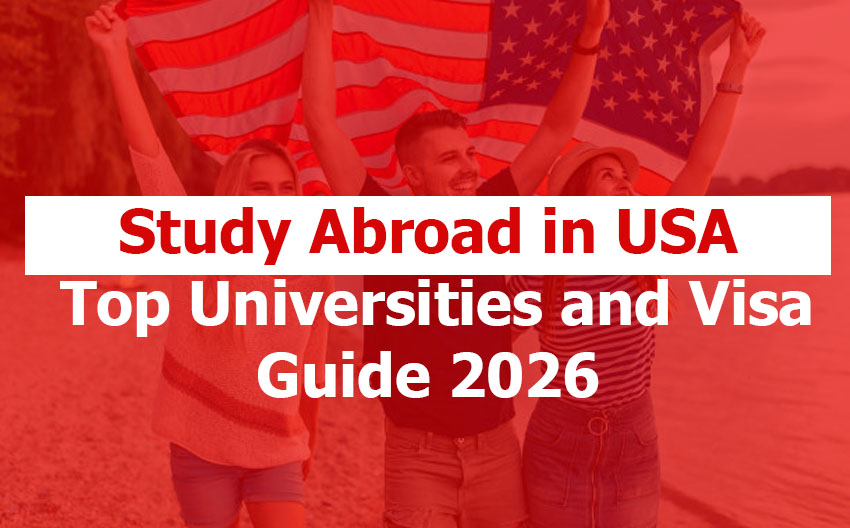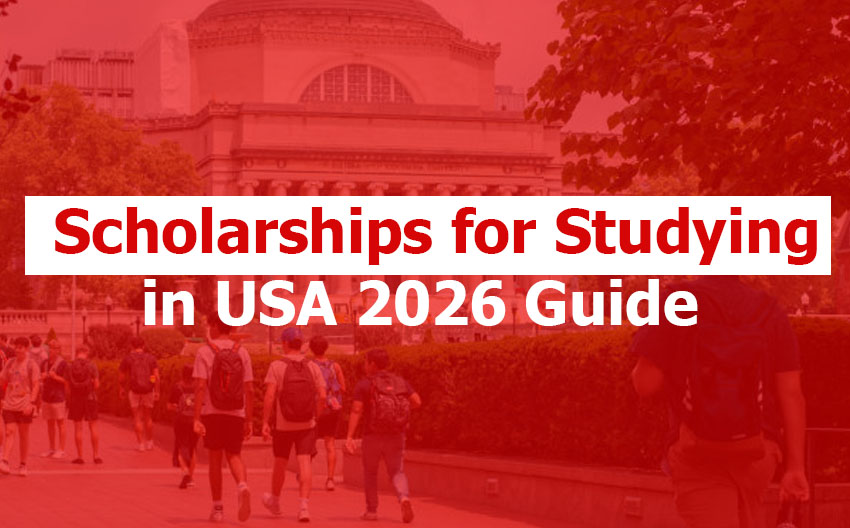More than 1.1 million international students are studying in the United States as of the 2023–2024 academic year, according to the Institute of International Education. That’s not just a number—it’s a statement of trust. For decades, the U.S. has been the magnetic north of higher education, pulling ambitious students from every corner of the globe.

The appeal is obvious. American universities are where theory meets invention. They’ve produced Nobel laureates, tech founders, and presidents. They lead in research funding, innovation ecosystems, and international diversity. Whether you dream of studying artificial intelligence at Stanford, business at Wharton, or political science at Harvard, the U.S. offers both scale and depth that few nations can rival.
But before your dream of studying in the U.S. can take flight, you’ll need to understand its requirements, visa process, and the universities best suited for your goals. This 2025 guide breaks it all down—clearly, practically, and with the kind of insight you won’t find on generic education blogs.
Study Abroad Requirements for the USA
Studying in America starts long before the visa interview—it begins with careful academic preparation, standardized testing, and meeting English proficiency standards.
Let’s walk through each piece.
Academic Requirements
U.S. universities don’t have a one-size-fits-all entry requirement, but there are consistent patterns.
Undergraduate programs usually expect:
- A strong secondary school record (minimum GPA equivalent of 3.0/4.0).
- SAT or ACT scores (optional at many universities post-2020, but still valued by top institutions).
- Proof of English proficiency (more below).
- Personal essays and recommendation letters that show intellectual curiosity and initiative.
Graduate programs often require:
- A recognized bachelor’s degree (four years or equivalent).
- GPA of at least 3.0/4.0 or higher for competitive programs.
- GRE or GMAT scores (though some business and STEM programs are now waiving these).
- A statement of purpose and professional references.
- Evidence of research experience or portfolio (for design, media, or research fields).
English Proficiency Tests
Non-native English speakers must prove fluency. The most accepted tests include:
- TOEFL iBT: Preferred by most American universities. Minimum scores range from 80–100.
- IELTS Academic: Minimum overall band score between 6.0–7.5.
- Duolingo English Test: Accepted widely post-pandemic, with 115+ considered competitive.
A growing number of institutions now allow waivers for students who completed their previous education in English-speaking countries or programs.
Application Documents
You’ll typically prepare:
- Transcripts (translated and evaluated if necessary).
- Standardized test results.
- Proof of English proficiency.
- Statement of Purpose (SOP) and essays.
- Letters of recommendation.
- Financial statements or bank letters showing sufficient funds.
Application Platforms
Most undergraduate applications go through:
- Common Application (CommonApp.org) – accepted by over 900 universities.
- Coalition Application – used by several elite institutions.
Graduate programs are handled directly through university portals. Application fees range from $50–$100 per school.
Admission Deadlines
There are generally three main cycles:
- Fall Intake (August/September): Main intake; deadlines usually between December and March.
- Spring Intake (January): Secondary intake; deadlines between July and September.
- Summer Intake (May): Smaller programs and community colleges.
Early decision (binding) and early action (non-binding) options are also available for competitive universities.
U.S. Student Visa Requirements (2025 Update)
Once accepted, the visa process becomes your next big milestone. The United States issues three main student visa types:
1. F-1 Visa (Academic Studies)
The most common, issued to students attending accredited U.S. universities or language institutes. It covers undergraduate, graduate, and doctoral studies.
2. J-1 Visa (Exchange Visitor)
For students in exchange or short-term academic programs. Often sponsored by organizations or governments.
3. M-1 Visa (Vocational/Technical)
For students attending non-academic or vocational schools.
Step-by-Step Visa Process
Receive Form I-20 or DS-2019
Issued by your admitting school, proving you’re enrolled in a SEVP-certified institution.
Pay the SEVIS Fee
The SEVIS I-901 fee is $350 for F-1 and M-1 visas, $220 for J-1 visas.
Complete DS-160 Form Online
Visit ceac.state.gov and fill the DS-160 nonimmigrant visa form.
Pay the Visa Application Fee
Currently $185 as of 2025.
Schedule Your Interview
Appointments are made through your nearest U.S. Embassy or Consulate.
Attend the Interview
Bring your I-20, DS-160 confirmation, payment receipts, financial proof, and transcripts.
Receive Your Visa Decision
Most applicants receive results within a week. Administrative processing can extend this.
Common Interview Mistakes to Avoid
- Failing to show strong ties to your home country.
- Inconsistent financial statements.
- Unclear study goals or inability to explain your course choice.
The golden rule: be honest, concise, and confident.
Top Universities in the USA for International Students (2025)
The U.S. is home to over 4,000 accredited universities, including 8 of the world’s top 10.
Below are the leading names by global ranking and academic reputation.
| Rank | University | Location | Global Rank (QS 2025) | Tuition (USD/Year) |
|---|---|---|---|---|
| 1 | Massachusetts Institute of Technology (MIT) | Cambridge, MA | #1 | $55,878 |
| 2 | Stanford University | Stanford, CA | #2 | $57,693 |
| 3 | Harvard University | Cambridge, MA | #3 | $54,269 |
| 4 | California Institute of Technology (Caltech) | Pasadena, CA | #6 | $56,862 |
| 5 | University of Chicago | Chicago, IL | #10 | $60,552 |
| 6 | Princeton University | Princeton, NJ | #17 | $52,800 |
| 7 | Columbia University | New York, NY | #22 | $63,530 |
| 8 | Yale University | New Haven, CT | #27 | $62,250 |
| 9 | University of California, Berkeley | Berkeley, CA | #29 | $46,326 |
| 10 | University of California, Los Angeles (UCLA) | Los Angeles, CA | #30 | $45,486 |
Beyond these giants, there are thousands of public and private universities that offer excellent programs at a fraction of the cost.
Notable affordable and high-quality options include:
- University of Texas at Austin
- Purdue University
- University of Wisconsin–Madison
- University of Florida
- Arizona State University
Cost of Studying and Living in the USA
The cost depends on location, university type, and lifestyle choices. Here’s a realistic breakdown:
Tuition Fees (Annual Averages)
- Community Colleges: $8,000–$12,000
- Public Universities (State-funded): $20,000–$35,000
- Private Universities: $35,000–$60,000+
Living Expenses
- Housing: $700–$1,500/month
- Food: $300–$500/month
- Transport: $100–$250/month
- Health Insurance: $1,000–$2,000/year
- Books & Miscellaneous: $1,000/year
Big cities like New York, Boston, and San Francisco are costly, while smaller cities like Austin, Gainesville, and Madison are budget-friendlier.
Scholarships and Financial Aid
International students can tap into merit-based, need-based, and research scholarships.
Major U.S. Scholarships include:
- Fulbright Program – Full funding for graduate studies.
- Hubert H. Humphrey Fellowship – Mid-career professionals.
- AAUW International Fellowships – Women pursuing graduate studies.
- University-specific aid – like Stanford Knight-Hennessy or Harvard’s financial aid grants.
Assistantships (Teaching or Research) can reduce tuition by up to 50–100% for graduate students.
Life as an International Student in the USA
Campus life is a blend of independence and discovery. Expect open classrooms, interdisciplinary learning, and a heavy emphasis on participation.
Most universities provide:
- Cultural Centers for international students.
- Student health and counseling services.
- Clubs, fraternities, and organizations that build lifelong friendships.
Students may work up to 20 hours per week on campus during semesters and full-time during breaks.
Healthcare is mandatory—purchase university plans or private coverage.
Post-Study Opportunities and Career Pathways
The U.S. rewards ambition with post-study work rights under OPT (Optional Practical Training) and CPT (Curricular Practical Training).
- OPT: Allows up to 12 months of work after graduation.
- STEM OPT Extension: Adds an extra 24 months for science, technology, engineering, and math graduates.
- CPT: Enables part-time internships during study.
Many students later transition from F-1 to H-1B work visas or employer-sponsored Green Cards.
Comparing the USA with Other Destinations
| Feature | USA | UK | Canada | Australia |
|---|---|---|---|---|
| Visa Type | F-1 | Tier 4 | Study Permit | Subclass 500 |
| Post-Study Work | Up to 3 years (STEM) | 2 years | 3 years | 2–4 years |
| Tuition (Avg.) | $30,000 | $25,000 | $20,000 | $25,000 |
| Research Opportunities | Excellent | Good | Moderate | Good |
| Global University Share (Top 100) | 45% | 20% | 10% | 8% |
The U.S. remains unmatched in academic diversity, innovation, and research output.
Trusted Resources
Bookmark these official links for accurate, updated information:
- EducationUSA – U.S. government resource for international students.
- U.S. Department of State – Student Visas
- Study in the States (DHS)
- Institute of International Education (IIE)
Final Thoughts: Turning the American Dream into an Academic Reality
Studying in the United States is more than an academic journey—it’s a personal transformation. You don’t just learn from professors; you learn from the rhythm of a culture that prizes curiosity and courage.
The path isn’t simple. It demands preparation, patience, and resilience. But the reward is immense: a world-class education and a network that lasts a lifetime.
The American dream, for students, isn’t just about opportunity—it’s about reinvention. And in 2025, that dream remains wide open.
Also Check:
- Hardest Universities to Get Into in 2025: Where Admission Dreams Demand the Most Dedication
- UCLA Acceptance Rate: What It Really Takes to Get In (2024–2025 Data Explained)
- Which College in Florida have a 100% Acceptance Rate? 10 Colleges in Florida have a 100% Acceptance Rate
- Universities in the USA with a 100% Acceptance Rate: List of All The Universities in the USA with a 100% Acceptance Rate



